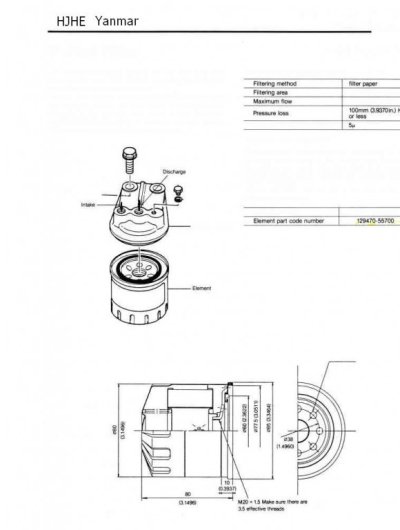sunchaser wrote:
The on engine filter can be called both a 2 and 5 micron rating dependent upon how they apply the most important criteria "beta number." A stamped 2u filter with a beta of 80 means 80% of the 2u and over particles*are trapped, 95 - 99% (pick a number) *of the 5u and over are trapped and* 99.9 of the 10u and larger trapped. Some filters are called 2u but they*have a 60% (or some such lower value)*beta number. These are pure junk but how do you know when only 2u is stamped on the filter?
The engine manufacturers will*spec out a complete beta profile for all sizes passed and when sourcing filters pass this profile on to the supplier as a "mandate." This is why OEM fuel filters are best used, even though more expensive in most cases. And too, this is why the OEM counter guys really don't know the micron size but somewhere in the organization they better know the beta number.* Especially if you have a TierII / III engine under warranty. In my years of experience with very large Cat equipment, it was uncommon to have a recall on fuel filters for improper sizing - but it can happen. Cat checks their filter suppliers on a random basis to insure quality control. There is a standard test for establishing beta numbers.
The shape of the particle can have an influence on % passing too. PhD thesis are done on this subject, for all types of filtering applications. Most beta tests are done on rounded and elongated particles to insure quality control and proper engineered design of the filter media. Picture a 2u round pebble compared to a 2u x20u pebble. Under a microscope they are indeed pebbbles or rocks. But on many 2u stamped filters they both pass. So engineered layering (more expensive) of the filter media is critical, to allow only say a 2u x 5u to pass.
But what causes more damage, a poor 2u filter or water in the fuel. Likely the latter.
*

